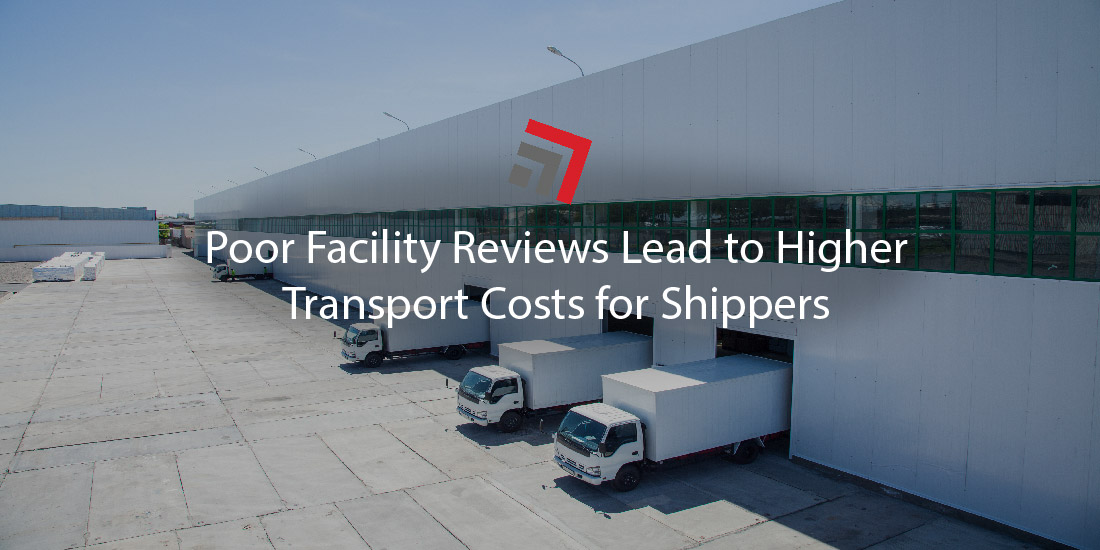Technology and innovation arrived a while ago in the shipping industry. Every year, sweeping advancements are made, bringing marginal improvements for shippers.
Among the range of solutions brought forward, real-time visibility into the status and location of shipments work wonders for shippers.
Electronic logging devices (ELDs), supply chain visibility platforms, and carrier-specific GPS tracking, are just a few that have blossomed over the last decade.
Any supply chain savant knows these technologies gives those responsible for their company’s logistics processes a competitive edge.
And, while there’s no denying these breakthroughs, snazzy tech can’t answer all inefficiencies inherent in managing supply chains.
While buffed with real-time data, many shippers fall short in other departments. Long-term performance trends and sneaky inefficiencies across their facilities are typically overlooked and can thrust upon high operating costs, accessorial charges, and even truckload rates.
Ironically, shippers have so much visibility into their carriers, they could probably learn what the driver of the load ate for breakfast. The same can’t be said within their own walls, however.
Poor facility reviews have long-term impacts on transport costs
Coupled with increased transport costs, shippers remiss to identifying internal issues with their facilities’ operations can also jeopardize their rapport with carriers, or trucking companies.
That’s where long-term performance impact comes into play. A bad rep with carriers can mean less access to plentiful capacity at competitive rates.
Convoy, a supply chain software company, asserts that carriers rely heavily on facility reviews to guide their business decisions—a.k.a deciding which shippers should be awarded space and fair rates.
It’s common for carriers to read reviews before participating in a shipper’s bid. If they aren’t already scared away, negative facility ratings can also prompt them to increase their rate per mile in case longer wait times and other inefficiencies cost them profit.
The power of reviews is a terrifying force. These unflattering critiques, whether substantiated or not, can be an inescapable black hole for businesses.
Just as you and your significant other may avoid the new restaurant that served a Yelp reviewer raw chicken, poor word of mouth at shipper facilities are just as stomach churning for carriers.
Of course, if shippers knew an inefficient facility of theirs was costing them higher freight rates and carrier distrust, they would be quick to try everything in their power to fix this predicament.
Unfortunately, that’s where data, or the lack thereof, becomes the hurdle.
Limited visibility into internal challenges is what prevents shippers from identifying any red flags. They usually operate under an “ignorance is bliss” sort of fashion and assume their facility ratings are a cause for concern.
Without investigation, these inefficiencies continue to hemorrhage out higher costs as, despite what shippers may believe, carriers take poor ratings seriously.
Improve facilities to improve ratings
The first step to overcoming any feat is simply acknowledging it exists. To improve poor ratings on any of their facilities, shippers need to diagnose the underlying causes for them.
Typically, facilities are given poor marks for long wait times, poor communication, and subpar design or infrastructure.
Again, while other issues may be in play, the following are some best practices to mitigate poor ratings.
Reduce wait times
Whether donning a five-star or one-star rating, most reviews mention dwell time, or how long of time truck drivers wait to drop off or pick up loads. If a driver spends most of their day twirling their thumbs at a shipper’s facility, a scathing, impatient, review can be expected.
High load volume can lead to high dwell times, so parceling off orders across the day, or even week, can create a smoother stream of inbound and outbound movement for freight-hauling guests.
Shippers should also evaluate their check-in procedures at facilities. An archaic and convoluted process can quickly result in a long queue of trucks outside—a bottleneck for both pickups and deliveries.
If they haven’t already, shippers should implement paperless check-in technologies.
Good communication
There should be good vibes at these facilities. Clear, concise, and chill interactions will allow all parties involved to be on the same page.
Instructions should be direct and to the point, but not disrespectful. While facility conditions and wait times hold a lot of gravitas, people generally remember social interactions the most when reflecting on their experiences.
Maybe, a truck driver had to wait the whole afternoon. Were they at least allowed to use the restroom?
Final Thoughts
Please contact us if you have any questions regarding this topic or any others in domestic logistics. In addition, stay up to date with weekly headlines from both trucking and rail via our Road Map newsletter.
More blogs similar to this:



Recent Comments